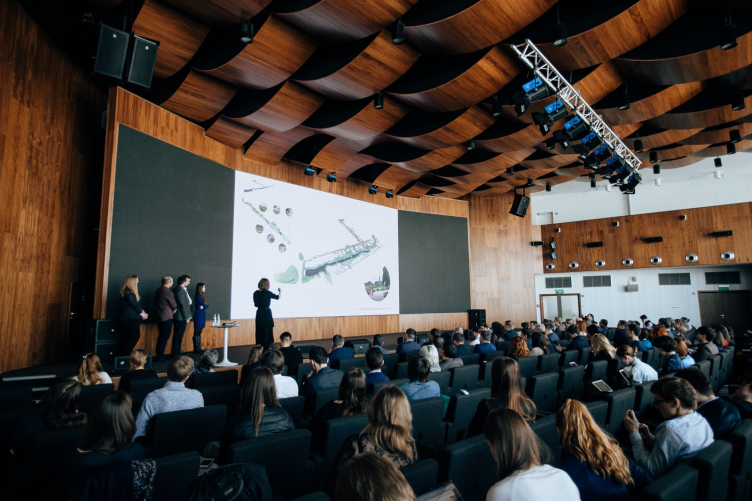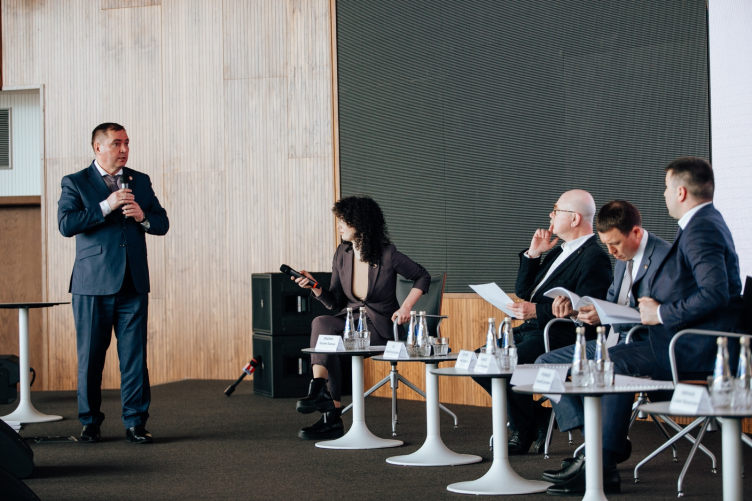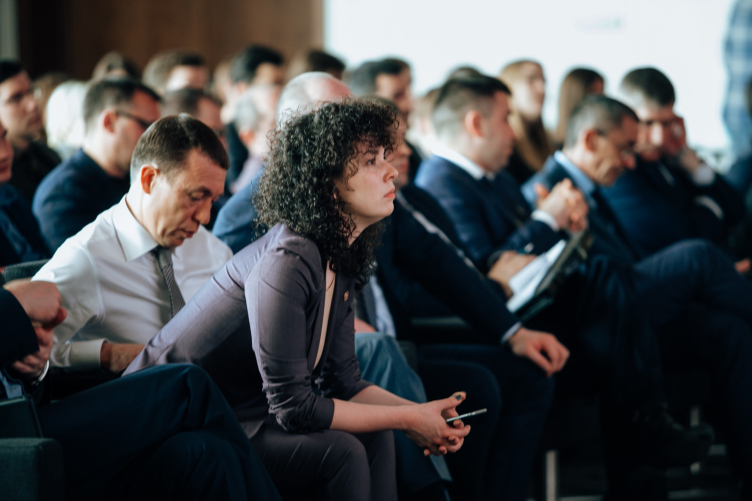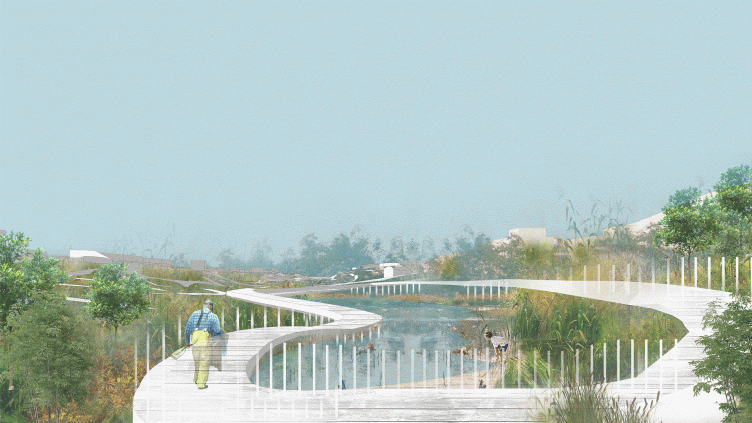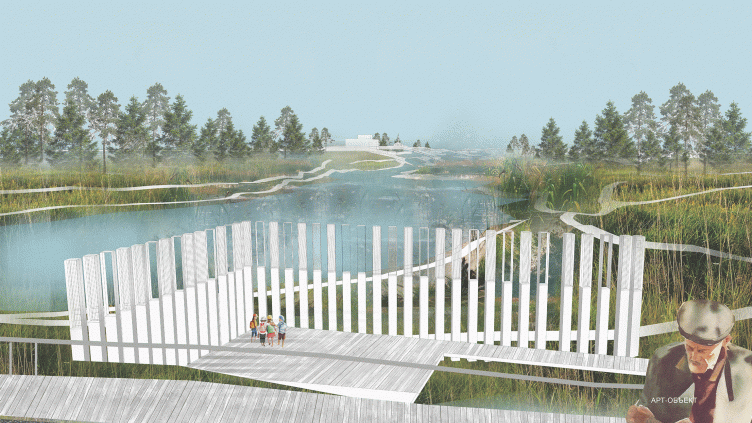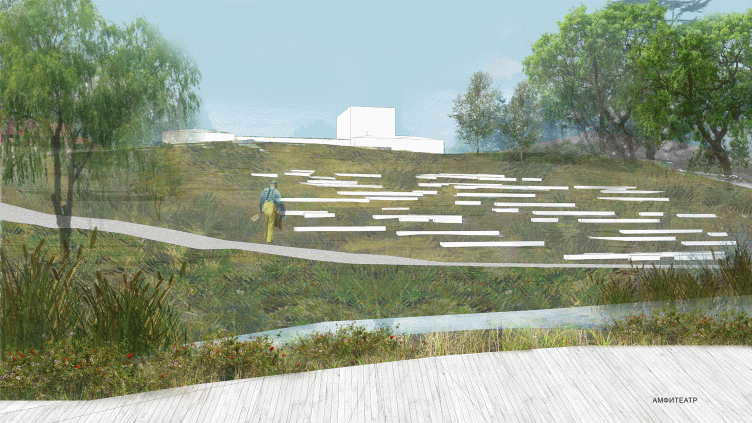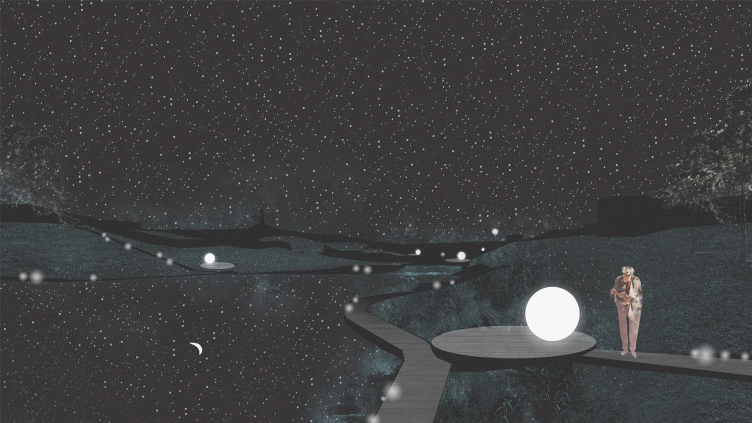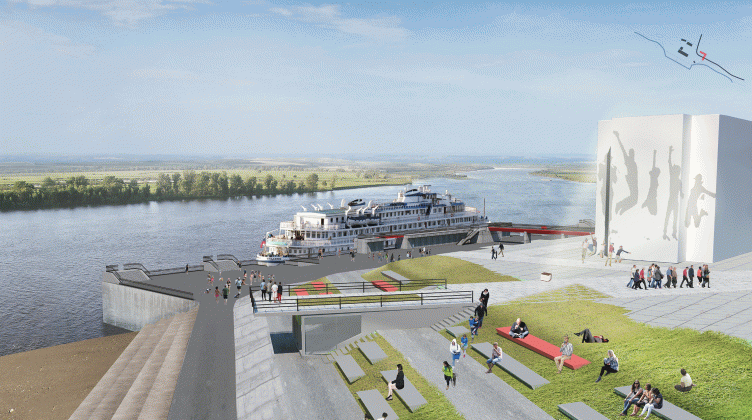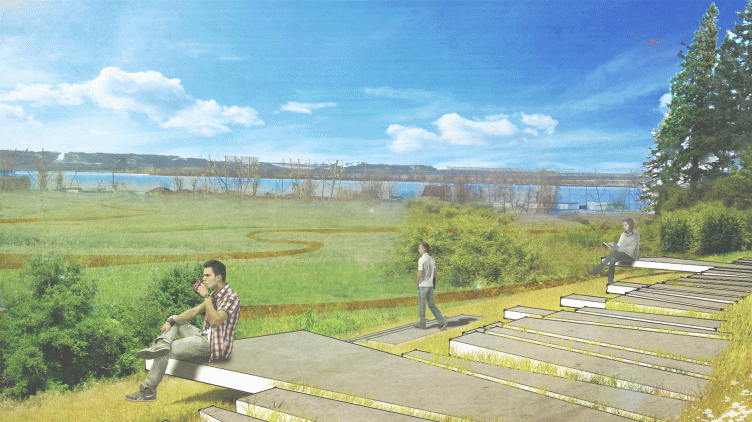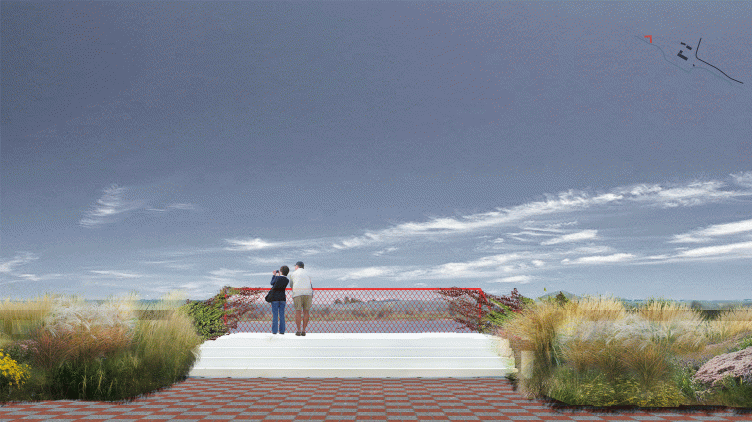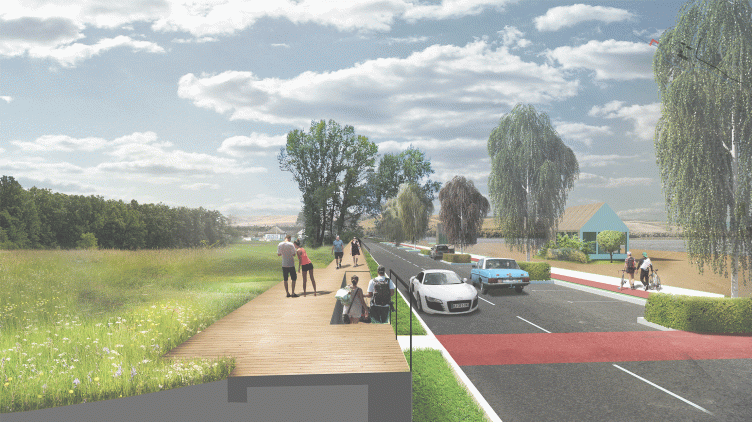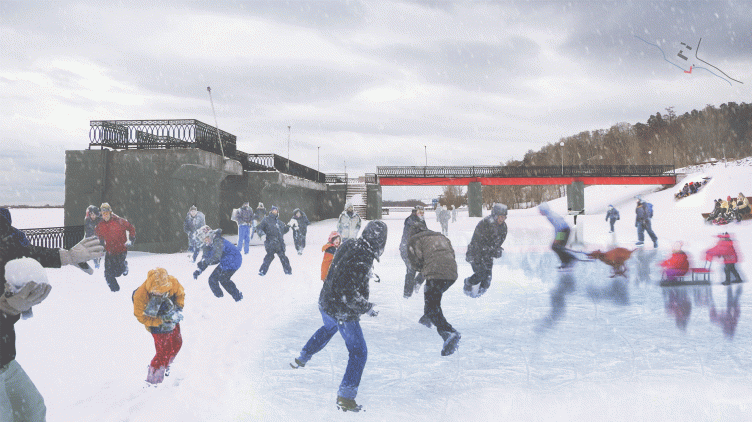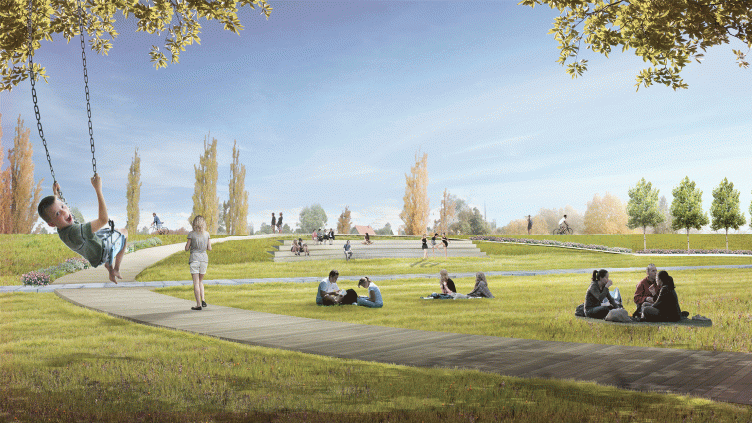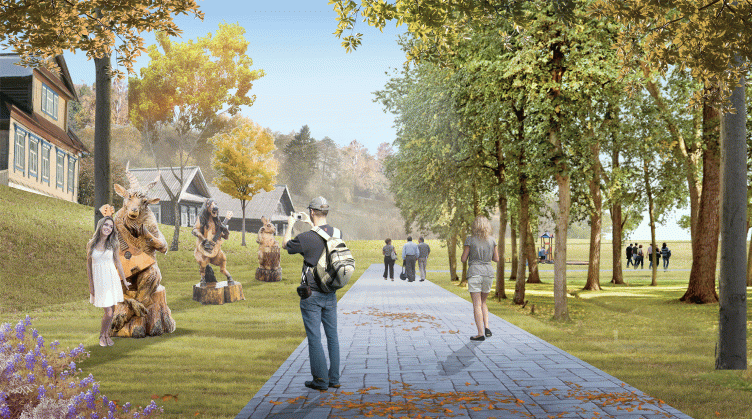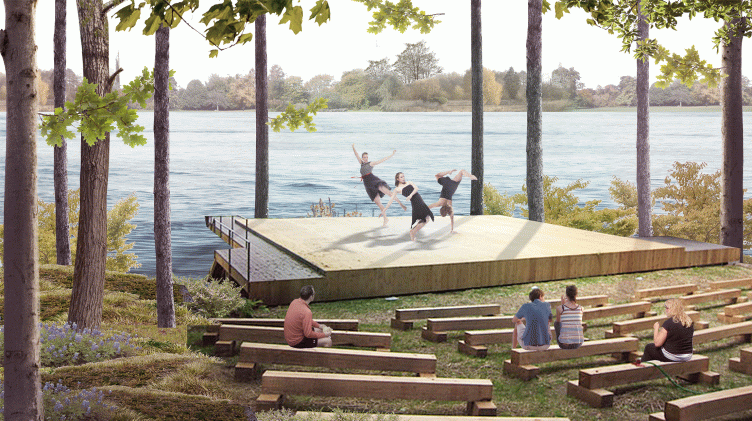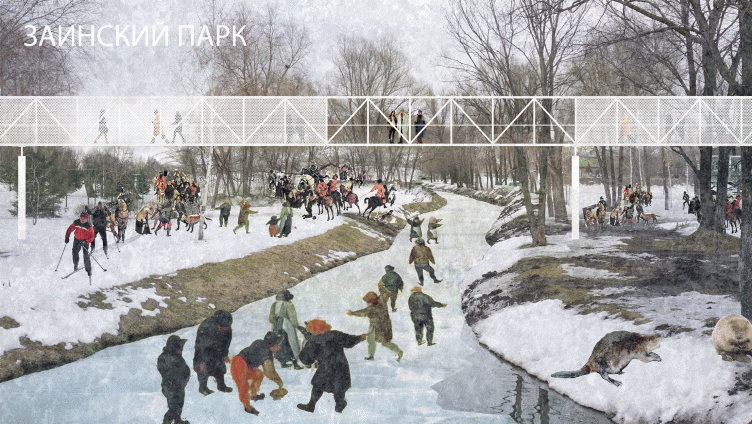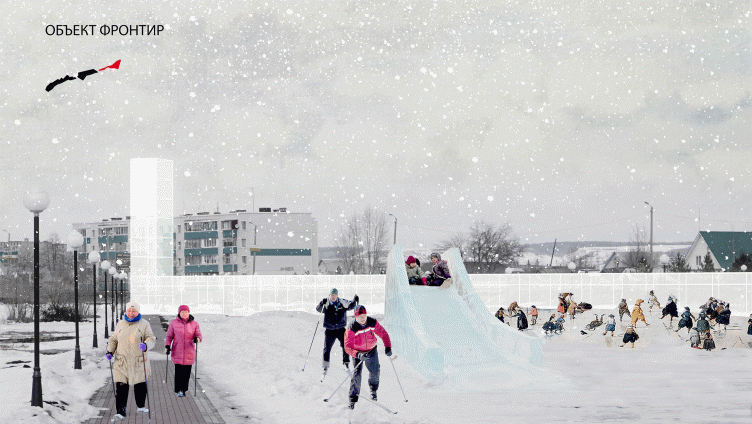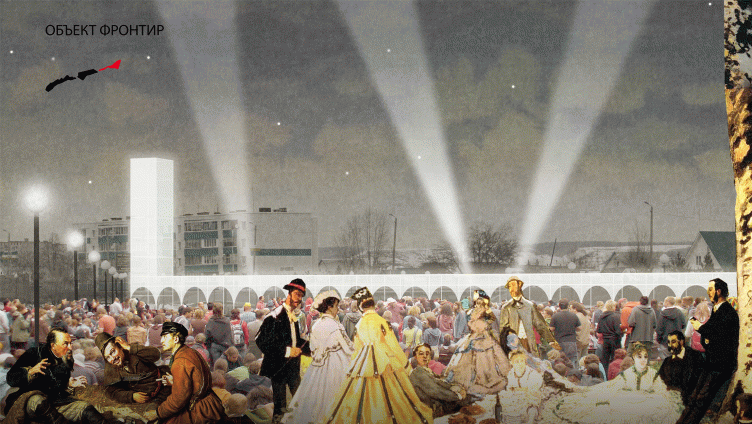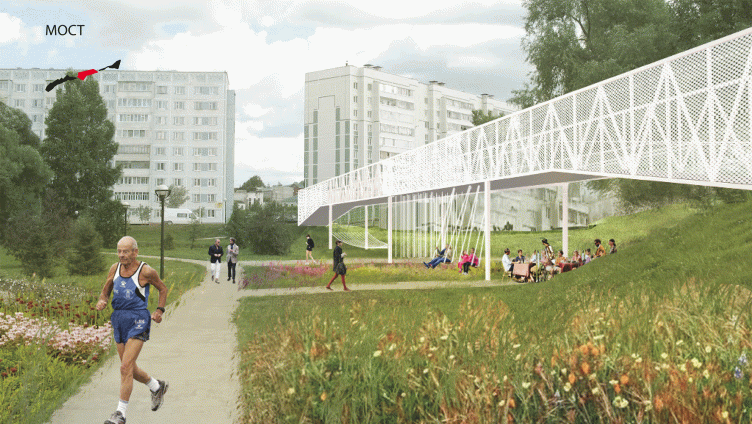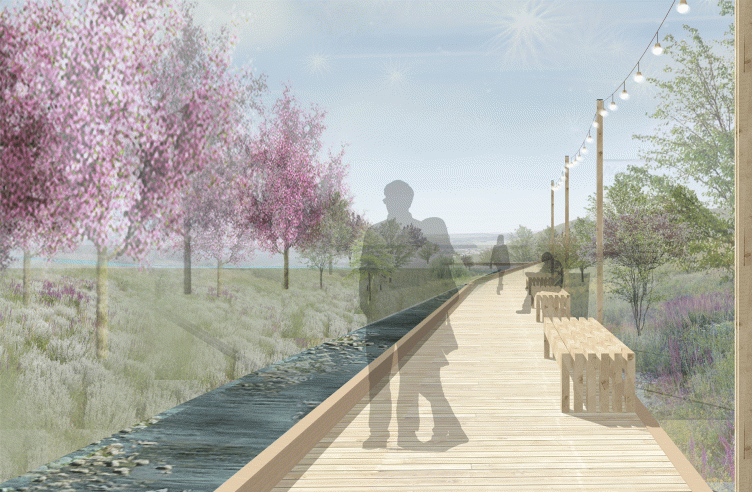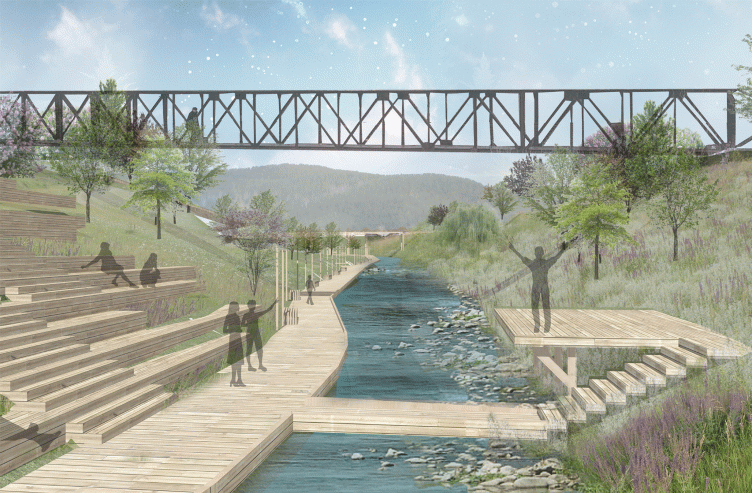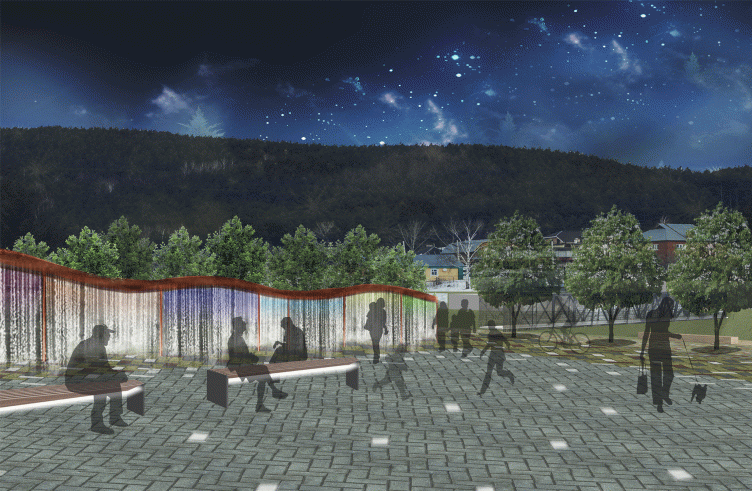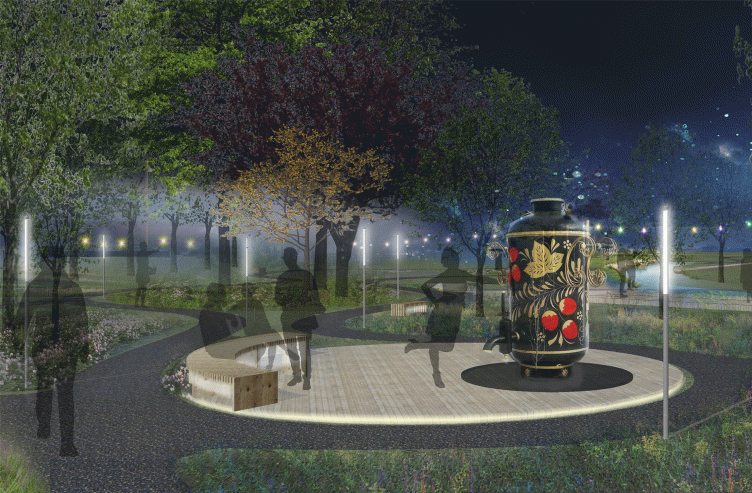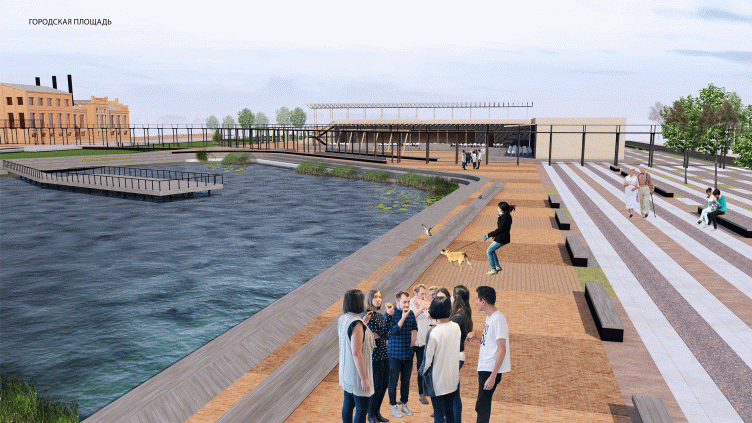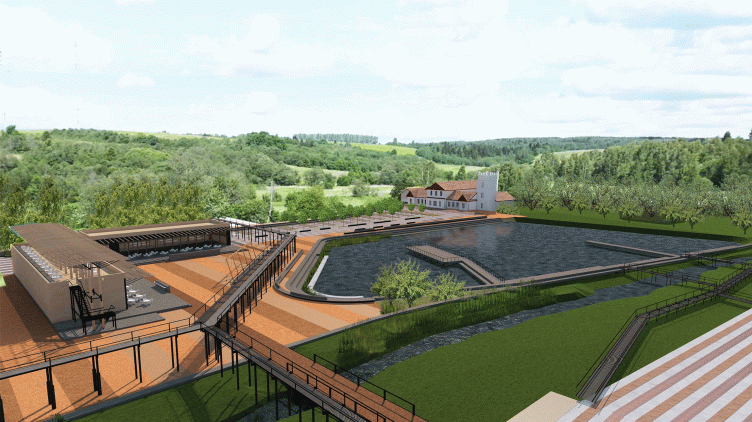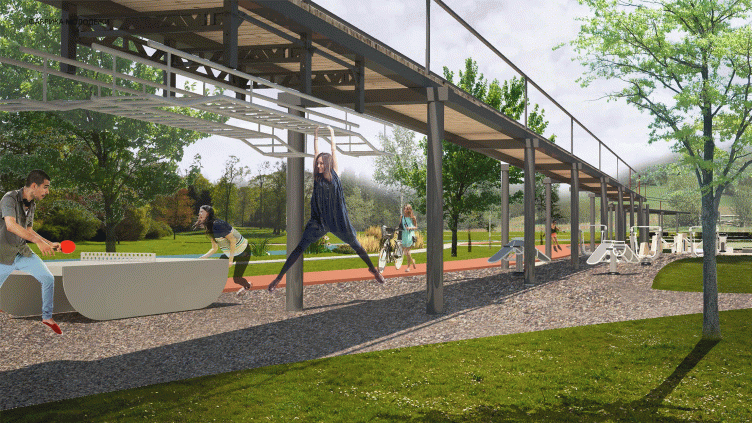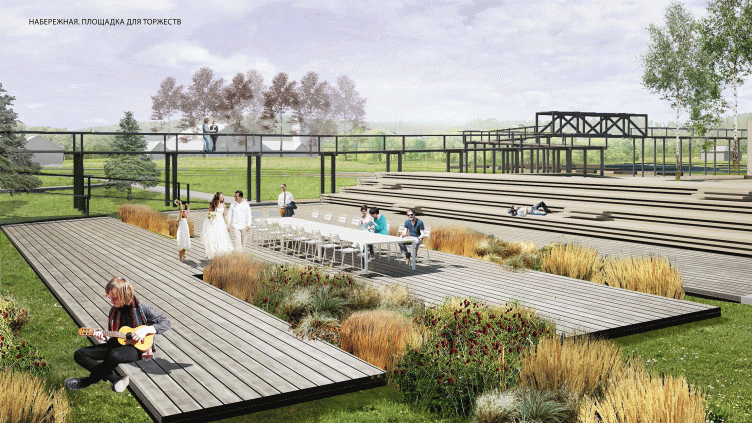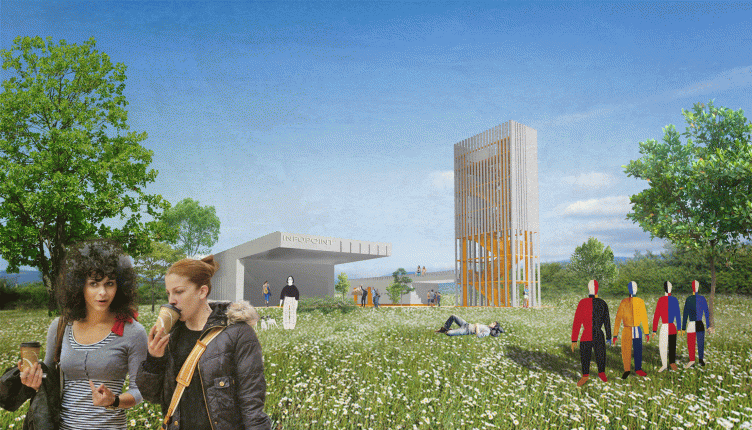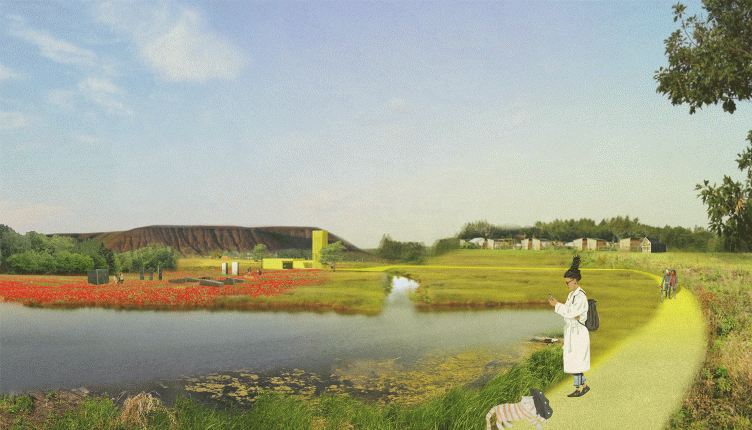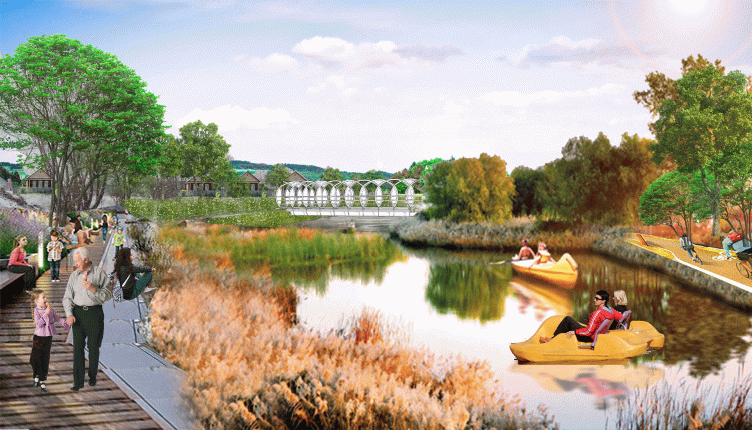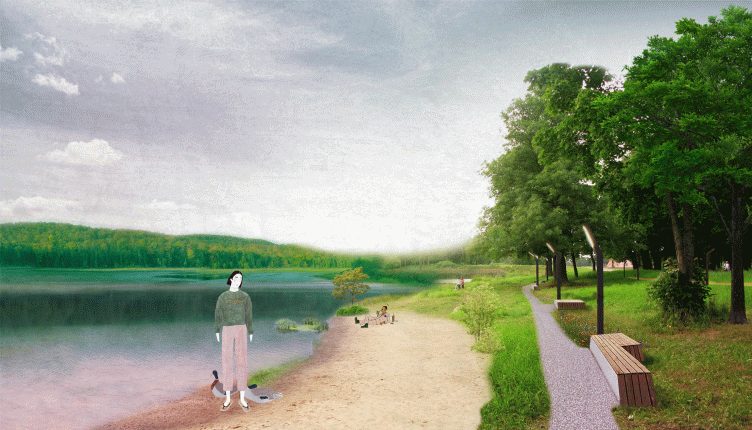The workshop "Best Place in Town: from a project to a promenade". Presentation of the projects. Photo courtesy by MARCH
The workshop "Best Place in Town: from a project to a promenade". Presentation of the projects. Photo courtesy by MARCH
The workshop "Best Place in Town: from a project to a promenade". Presentation of the projects. Photo courtesy by MARCH
Thirty young architects worked on the projects under the guidance of their tutors from the 12th to the 30th of March. All the concepts they developed will be used as a basis for working projects that will be implemented as early as this summer, the participants of the workshop becoming the members of the working groups.
All the seven concepts are presented below.
***
Bogatye Saby. Damp Morning Air
Authors: Alexandra Perevalova, Anastasia Bubennova, Pavel Medvedev, Edward Gubeev, Ildar Mirkhaziyanov, Alexandra Plotnikova
Tutors: Narine Tyutcheva, Anton Petukhov
Project of the workshop "Spring MARCH in Kazan". Bogatye Saby: Damp Morning Air. Provided by MARCH Lab.
Bogatye Saby is a small settlement with a population of about eight thousand people, and designing a park near the water was quite a tough call for the architects. The difficulty consisted primarily in the requirement to inscribe a rather large chunk of land into the settlement. Besides, this was to be done as tactfully and unobtrusively as possible, considering the format and the ways of the small town.
Project of the workshop "Spring MARCH in Kazan". Bogatye Saby: Damp Morning Air. Provided by MARCH Lab.
Project of the workshop "Spring MARCH in Kazan". Bogatye Saby: Damp Morning Air. Provided by MARCH Lab.
Project of the workshop "Spring MARCH in Kazan". Bogatye Saby: Damp Morning Air. Provided by MARCH Lab.
Project of the workshop "Spring MARCH in Kazan". Bogatye Saby: Damp Morning Air. Provided by MARCH Lab.
Project of the workshop "Spring MARCH in Kazan". Bogatye Saby: Damp Morning Air. Provided by MARCH Lab.
***
Krasny Klyuch. Achkych bu Achkych
Authors: Ilia Berezin, Alisher Abdullaev, Emil Sirazetdinov, Aleksey Arushanyan
Tutor: Svetlana Golovina
Project of the workshop "Spring MARCH in Kazan". Krasny Klyuch: Achkych Bu Achkych. Provided by MARCH Lab.
Although Krasny Klyuch is a small town, its shoreline became one of the favorite recreation places not only for its inhabitants but also for the people from the nearby towns. Due to the fact that the popularity of this territory is unquestionable, the authors concentrated on improving and perfecting the already-existing functional zones. This will help avoid investing considerable funds into a grand-scale reconstruction of the entire embankment but at the same time this will provide an interesting and high-quality recreation for the town people. The architects also tried to establish a connection between the town and the shoreline.
Project of the workshop "Spring MARCH in Kazan". Krasny Klyuch: Achkych Bu Achkych. Provided by MARCH Lab.
Project of the workshop "Spring MARCH in Kazan". Krasny Klyuch: Achkych Bu Achkych. Provided by MARCH Lab.
Project of the workshop "Spring MARCH in Kazan". Krasny Klyuch: Achkych Bu Achkych. Provided by MARCH Lab.
Project of the workshop "Spring MARCH in Kazan". Krasny Klyuch: Achkych Bu Achkych. Provided by MARCH Lab.
***
Mamadysh
Authors: Alia Fakhrutdinova, Ildar Biganyakov, Dima Mukhametov, Almaz Valiullin, Camilla Minnulina, Lenar Khamitov, Ilia Fattakhov
Tutor: Yaroslav Kovalchuk
Project of the workshop "Spring MARCH in Kazan". Mamadysh. Provided by MARCH Lab.
Mamadysh is a town situated in a picturesque location. It straddles the Oshma River over which currently there are no pedestrian bridges as such. The authors propose to tie the city together into a single whole through creating a park in the floodplain of the river. This park will become the place for organizing large festivals and will bring together the people from both banks.
Project of the workshop "Spring MARCH in Kazan". Mamadysh. Provided by MARCH Lab.
Project of the workshop "Spring MARCH in Kazan". Mamadysh. Provided by MARCH Lab.
***
Zainsky Park
Authors: Khamid Taikenov, Raushan Shafigullin, Anna Fedorovich, Karina Davletyanova, Aleksey Karasev, Artem Stepanov, Marcel Kayumov
Tutors: Nikolai Lyzlov, Philipp Yakubchuk
Project of the workshop "Spring MARCH in Kazan". Zainsky Park. Provided by MARCH Lab.
As a matter of fact, the town of Zainsk already has a city park in it, and it is always full of visitors. However, the pedestrian and the automotive bridges divide the park into segments and separate it from the other riverfront zones that otherwise could also be included in the city's overall "green framework". Prepared by the members of the workshop, this project is going to tie all these zones together and fill them with the appropriate features.
Project of the workshop "Spring MARCH in Kazan". Zainsky Park. Provided by MARCH Lab.
Project of the workshop "Spring MARCH in Kazan". Zainsky Park. Provided by MARCH Lab.
Project of the workshop "Spring MARCH in Kazan". Zainsky Park. Provided by MARCH Lab.
***
Kukmor
Authors: Anna Kartavaya, Elaterina Demina, Veronika Churakova, Leisan Yurtaeva, Artem Malykhin, Konstantin Samartsev
Project of the workshop "Spring MARCH in Kazan". Kukmor. Provided by MARCH Lab.
The town of Kukmor straddles the Nurminka River whose shoreline has such a complex terrain that they are all but completely shut off from being a "city" territory. Because the floodplain of the river is a protected water zone, the project is notable for the unobtrusiveness of the solutions that it proposes. The architects developed a network of pedestrian routes running along the river, and proposed creating three functional zones - a cultural, a recreational, and a sports one.
Project of the workshop "Spring MARCH in Kazan". Kukmor. Provided by MARCH Lab.
Project of the workshop "Spring MARCH in Kazan". Kukmor. Provided by MARCH Lab.
Project of the workshop "Spring MARCH in Kazan". Kukmor. Provided by MARCH Lab.
Project of the workshop "Spring MARCH in Kazan". Kukmor. Provided by MARCH Lab.
***
Mendeleevsk
Authors: Anna Gabbasova, Alexandra Kormushina, Maria Danilova, Rinat Garipov, Ildar Minemukhametov, Alina Akhmetova
Tutors: Oleg Shapiro, Maria Yarmarkina
Project of the workshop "Spring MARCH in Kazan". Mendeleevsk. Provided by MARCH Lab.
At a first glance, the land site that the architects chose to work with in Mendeleevsk can seem a poor choice - it looks as if it is situated in the small of the "hourglass" that connects two parts of the city, squeezed by two industrial parks on both sides. However, according to the authors, this place has a large potential and can become an actively visited spot convenient for the people of Mendeleevsk. The project is based on the industrial aesthetics.
Project of the workshop "Spring MARCH in Kazan". Mendeleevsk. Provided by MARCH Lab.
Project of the workshop "Spring MARCH in Kazan". Mendeleevsk. Provided by MARCH Lab.
Project of the workshop "Spring MARCH in Kazan". Mendeleevsk. Provided by MARCH Lab.
Project of the workshop "Spring MARCH in Kazan". Mendeleevsk. Provided by MARCH Lab.
***
Muslyumovo. Traces of the future.
Authors: Aleksey Karlinsky, Taisiya Khalikova, Aigul Bulatova, Julia Ustinova, Almaz Mugliev, Julia Khairullina
Tutor: Konstantin Khodnev
Project of the workshop "Spring MARCH in Kazan". Muslyumovo: Traces of the Future. Provided by MARCH Lab.
The place for the future Muslyumovo park is located at the very edge of the settlement because the authors were confronted with a challenging task of attracting visitors to this spot without relying on any transit flows. The architects looked to create here an infrastructure necessary for the local people, as well as to make the park in the floodplain of the Ik River a recreation place attractive for the people from the neighboring towns. The uniqueness of this place is ensured by the archaeological monument and the beautiful landscape with a swan lake.
Project of the workshop "Spring MARCH in Kazan". Muslyumovo: Traces of the Future. Provided by MARCH Lab.
Project of the workshop "Spring MARCH in Kazan". Muslyumovo: Traces of the Future. Provided by MARCH Lab.
Project of the workshop "Spring MARCH in Kazan". Muslyumovo: Traces of the Future. Provided by MARCH Lab.
Project of the workshop "Spring MARCH in Kazan". Muslyumovo: Traces of the Future. Provided by MARCH Lab.


